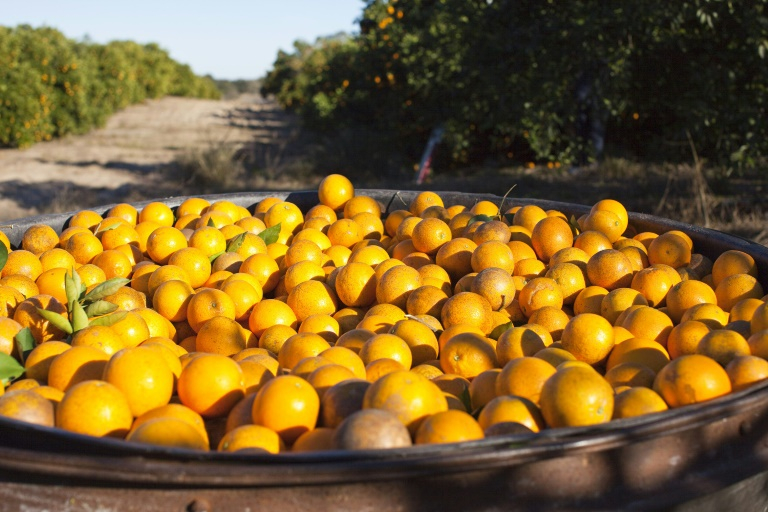
A global team of scientists sequenced the genomes of 60 citrus varieties to draw up a family tree going to the very root of one of the world’s best-loved fruit groups. Image: Matt Stroshane – GETTY / AFP
Oranges, grapefruit, lemons and limes are all hybrids, mixed and matched from 10 “wild” citrus species descended from a single Asian ancestor some eight million years ago, scientists said Wednesday.
A global team of scientists sequenced the genomes of 60 citrus varieties to draw up a family tree going to the very root of one of the world’s best-loved fruit groups.
They traced the mother of all citrus to the southeastern foothills of the Himalayas in the late Miocene period, study co-author Guohong Wu of the US Department of Energy Joint Genome Institute told AFP.
That specimen, he said, likely resembled a present-day, inedible “papeda” — a bitter, sour fruit.
From this source emerged 10 wild or “natural” species — including the pummelo, wild mandarin, and a type of kumquat.
Some of the ten are extinct.
“All other citrus types, including the economically important cultivars (oranges, grapefruits, lemons, limes) are hybrids derived from two or more of the… 10 pure species,” Wu said by email.
They spread rapidly throughout southeastern Asia during an ancient era of climatic change that resulted in a weakening of summer monsoons, the team found.
The new gene analysis, added Wu, provided the first full picture of the origin, dispersal and timing of ancestral citrus diversification, long considered controversial.
“This comparative genomic approach offers an unambiguous solution to the century-old chaotic status of citrus taxonomy,” Wu said.
“Understanding the diversity and relationship among citrus fruits is the first step toward breeding desirable and disease-resistant citrus fruits.” AB
RELATED STORIES:
Baldness ‘cure’ found; also used in cooking fast food french fries
Ancient infant helps scientists unravel America’s genetic history
Stem cell transplant offers hope for scleroderma patients